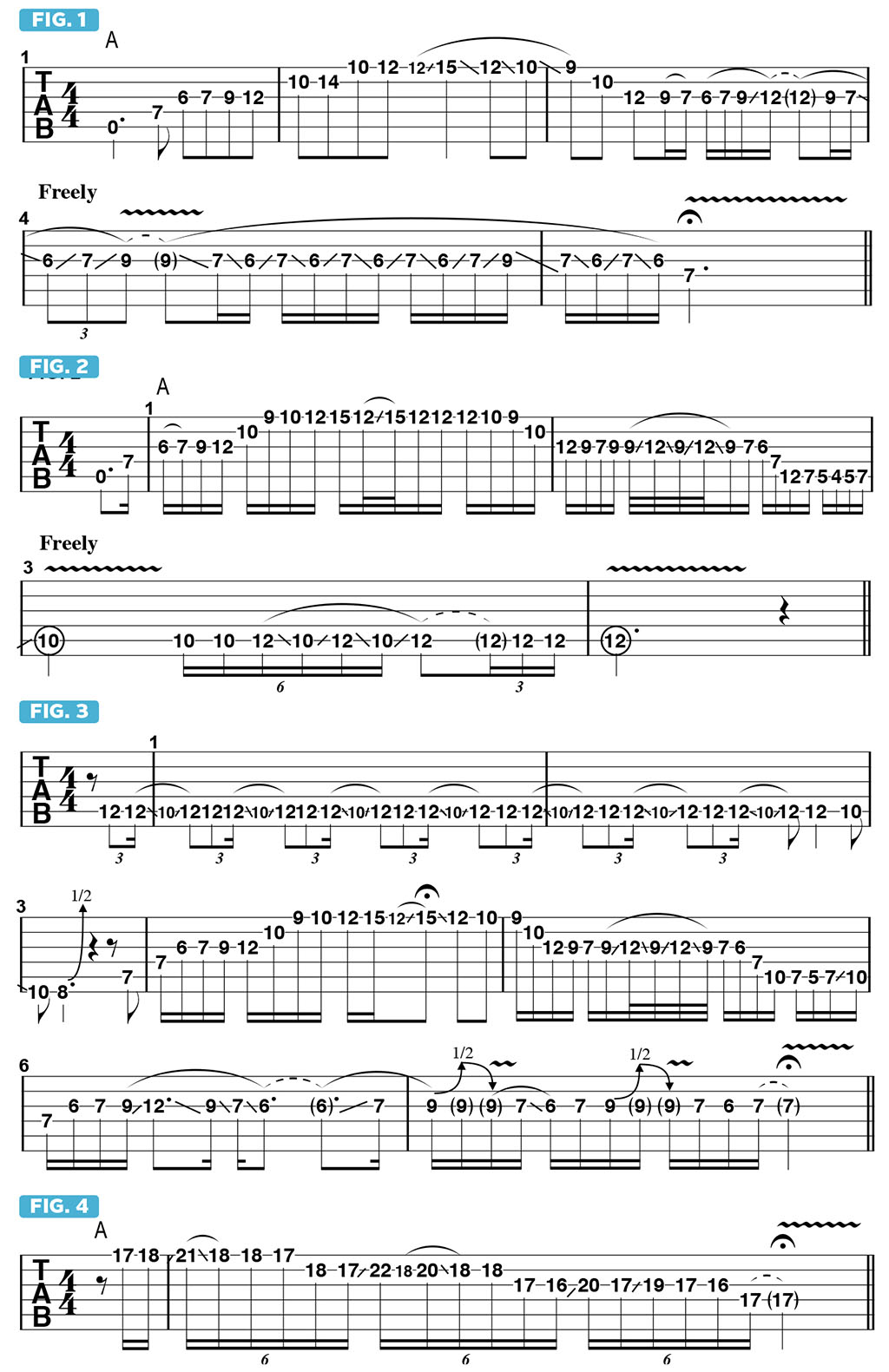How to use finger slides to create expressive, sitar-like sounds
Dweezil Zappa shows you how to utilize this tasteful technique to give your playing an exotic flavor
Last time, We checked out some unusual ways to phrase melodic patterns by re-envisioning notes on different string groups, thus changing their sound and articulation. We looked at examples of playing a melody on a single string with finger slides, as well as lines that incorporate half-step bends intended to emulate the sound of sliding up to or down from a note. The intended effect is to make your guitar sound drunk.
Over the years, I’ve become obsessed with getting the widest variety of possible sounds using finger slides, by either emulating the sound of a slide guitar or venturing toward the more Eastern sound of a sitar, with its fast, jerky slides between notes.
On a sitar, the strings are very light and sit above frets that are not affixed to the fingerboard, so one can easily bend a note very widely by simply pushing down the string. Not so on the guitar, so I instead use quick finger slides to achieve a similar effect.
In FIGURE 1, I play a scale sometimes referred to as A dominant pentatonic over an open A-string drone. This scale is almost the same as the more familiar A minor pentatonic scale (A, C, D, E, G), the difference being that the major third, C#, is substituted for the minor third, C.
I begin by simply ascending and descending the scale then conclude by sliding freely up and down the G string, in order to create an Eastern-style melody. I’m using a Sustainiac pickup in this example, à la an E-Bow (a magnetic device that can be held above the string), which creates a magnetic loop that keeps the string ringing without having to pick it repeatedly.
In FIGURE 2, I begin by ascending in a similar manner, but now I add quick slides between pairs of notes, such as E and G in bars 1 and 2, and G and A in bar 3. These quickly repeated slides serve to emulate the sitar sound I am referring to.
Another cool thing to do is to apply syncopated rhythms to slides, as shown in FIGURE 3: I begin with repeated 16th-note-triplet-based slides between G and A, followed by phrases articulated with slides in a manner similar to FIGURES 1 and 2.

Another great twist is to broaden the harmony to a more exotic scale, such as Phrygian-dominant, as shown in FIGURE 4. The A Phrygian mode is spelled A, Bb, C, D, E, F, G (the same notes of the F major scale). Just as we had done with A dominant pentatonic, we get A Phrygian-dominant by replacing the note C, with C#. The quick slides between pairs of notes in this example, phrased as sextuplets, bring us closer to an Eastern, sitar-like melody.
Dweezil Zappa is a brilliant guitarist and son of the legendary Frank Zappa. For the last 12 years he has toured the world performing his father’s music with Zappa Plays Zappa and other ensembles. His latest album is Confessions of a Deprived Youth (Deep Fried Youth).
Get The Pick Newsletter
All the latest guitar news, interviews, lessons, reviews, deals and more, direct to your inbox!









![Joe Bonamassa [left] wears a deep blue suit and polka-dotted shirt and plays his green refin Strat; the late Irish blues legend Rory Gallagher [right] screams and inflicts some punishment on his heavily worn number one Stratocaster.](https://cdn.mos.cms.futurecdn.net/cw28h7UBcTVfTLs7p7eiLe.jpg)
